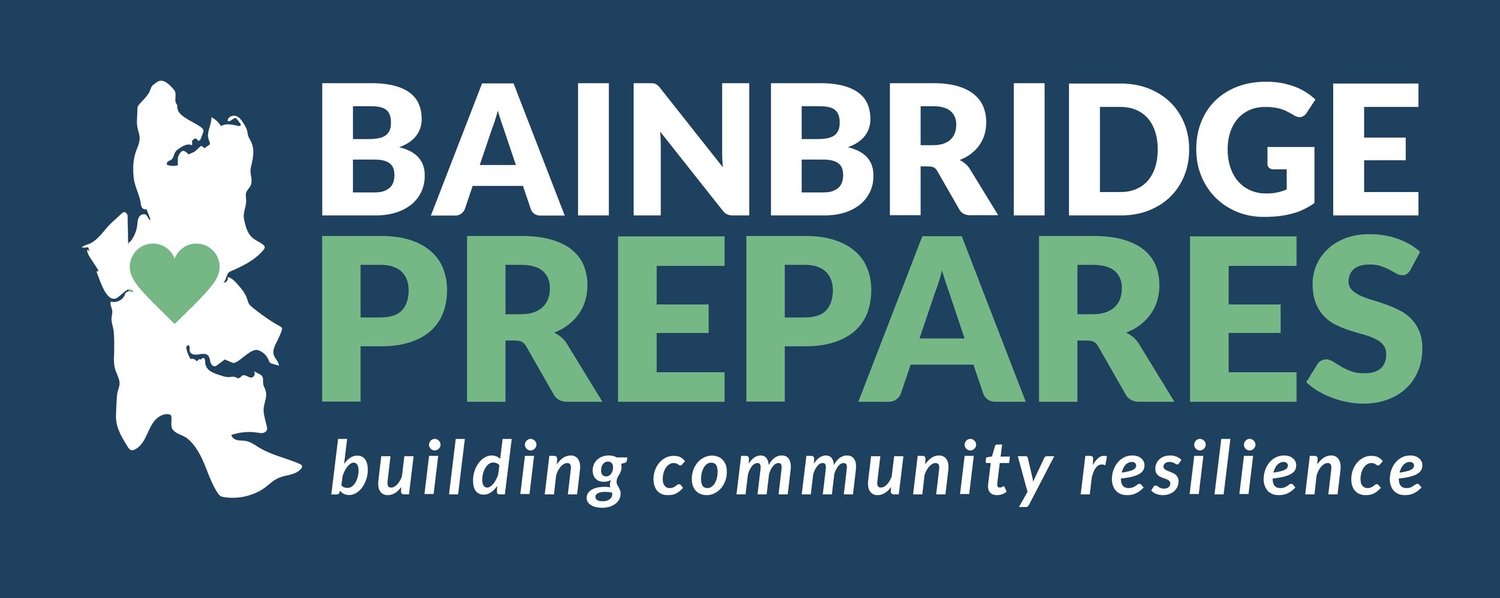Creating a Safe and Clean Water Supply for Emergencies
This year Bainbridge Prepares is teaming up with the City of Bainbridge Island Climate Smart Bainbridge Challenge to make your emergency preparedness more Climate Smart. What does that mean? It means taking climate change into consideration when you’re preparing your household for emergencies. The City’s Climate Smart Team has created recommendations for each month to match up with our Prepare in a Year 24 program.
This month, we’re focusing on sustainable water storage and conservation tips to make sure you have a safe and clean water supply when you need it most.
Keep Sustainability in Mind When Storing Your Water
Having a sizable clean water supply is critical when preparing for emergencies, but water stores must be rotated regularly to keep your supply safe for consumption. Here are some tips to be more sustainable when managing your water supply:
Reuse materials you already have at home. Although plastics are not typically the most sustainable choice, the Washington Emergency Management Division recommends plastic containers with screw-top lids (such as two-liter soda bottles or food-grade plastic jugs) for long-term water storage. Glass containers are not recommended because they can easily break in the event of an emergency like an earthquake, and brittle plastics like milk jugs can be difficult to seal properly (which compromises the safety of the water inside), and they become more fragile over time. When planning to dispose of containers throughout the year, consider saving those that can be used to store water in your preparation kit.
Rotate out stored tap water every six months; commercially sealed water is typically safe for up to two years (though some are dated for longer storage). Be sure to check any expiration dates of sealed water that you purchase and date any storage containers that you put together at home. When it’s time to replace your water supply, consider ways to reuse the water that you would otherwise throw out. While old, stored water may not be safe to drink, you can use it to water your plants, boil it for cooking, or use it to wash dishes, among other things.
Recycle! Because you’ll need to regularly update your water storage, you may need periodically to clear out the containers you’re using. Reuse what you can, and check out ways to properly recycle and dispose of those that you aren’t able to reuse.
Proper water storage is just one part of building your kit—next month we’ll explore ways to incorporate sustainability with other grab-and-go kit supplies.
Water is a precious resource that becomes even more important when disaster hits. There are many climate smart actions you can take to conserve water all year long. Join the Climate Smart Bainbridge Challenge and explore the “Be Water Wise” action category to discover simple, affordable ways to save water in your daily life.

